
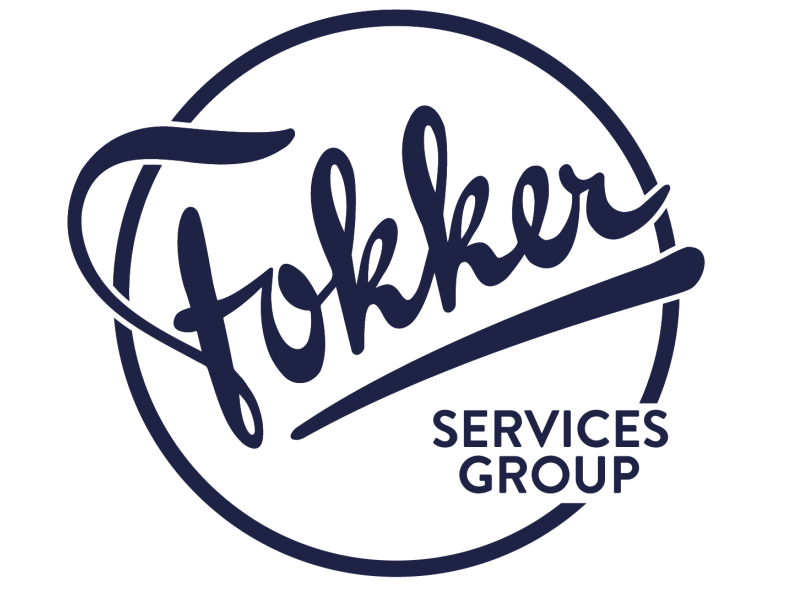
FOKKER SERVICES MODIFICATIONS (69)
Anti-Jamming & Spoofing – GNSS Resilience for Boeing 737NG & 747 operators
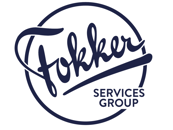
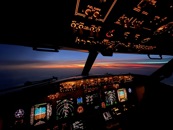
Prevent signal loss and spoofing threats before they disrupt your operations.
This fully certifiable solution offers real-time protection against GNSS jamming and spoofing for commercial and military aircraft.
Solution highlights
-
Real-time jamming and spoofing mitigation
-
CRPA antenna technology (multi-element array)
-
Compatible with existing GNSS and FMS setups
-
Available as complete turnkey retrofit kit
-
STC development available for multiple aircraft types
-
Compliant with latest EASA/FAA guidance
Benefits
-
Improved operational safety in GPS-contested environments
-
Protects RNP, LPV and GNSS-based navigation continuity
-
Enables compliance with evolving global regulations
-
Supports predictive navigation integrity monitoring
Installation & Certification
Offered as a Part 21J-certified modification, fully customizable for your fleet. STC paths available for Airbus, Boeing, Embraer, and others.
Looking to future-proof your fleet against GNSS disruption?
Get in touch to discuss a tailored solution or request STC availability for your aircraft type.
B737 NG SBAS GNSS Aircraft Integration by Fokker Services

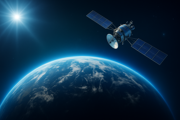

Overview
Fokker Services offers a certified solution for the integration of Satellite-Based Augmentation Systems (SBAS) and Global Navigation Satellite Systems (GNSS), supporting modern navigation, surveillance, and performance-based operations. This upgrade ensures compliance with global mandates while delivering operational efficiency and precision.
B737 NG LPV (Localizer Performance with Vertical Guidance) Solution



Overview
Localizer Performance with Vertical Guidance (LPV) enables precision-like approaches down to CAT I minima—without requiring any ground-based ILS infrastructure. LPV relies on Space-Based Augmentation Systems (SBAS) such as EGNOS (Europe), WAAS (U.S.), or other regional systems. This makes it an ideal upgrade for operators seeking improved accessibility, operational flexibility, and compliance with evolving navigation mandates.
Aircraft Interface Device (AID) Boeing B787 Dreamliner for EFB

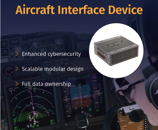

Airlines are asking for an alternative solution for the integrated Electronic Flight Bag (EFB) on Boeing 787, Fokker Services Group develops a flexible solution based on Aircraft Interface Device (AID)
Traffic Alert and Collision Avoidance System (TCAS) 7.1



The Traffic alert and Collision Avoidance System (TCAS) is introduced to reduce the risk of mid-air collisions or near mid-air collisions between aircraft. When TCAS II version 7.1 is implemented the probability of mid-air collisions will be reduced significantly. *
The introduction of TCAS change 7.1 software is available for Fokker 50 (SBF50-34-072), Fokker 70 and Fokker 100 A(sbf100-34-105/110) as well as for other types of aircraft like Airbus A318, A319, A320, A321, Boeing 737 series, 757, 767, Bombardier Dash 8 and CRJ. CERTIFICATIONS | Fokker Services Group | Fokker Services Group
Systems from several major vendors are covered in these STS's.
Replace Halon by non-Halon fire extinguisher units



New european rule making will be come applicable:
•EASA HalonGuide Nov 2019
•EU: Regulation (EC) No 1005/2009
•EU: Commission Regulation (EU) No 2017/605
and will prohibit the use of Halon filled units per 1 Jan 2026.
Upgrade of TCAS to V7.1 on Boeing 737


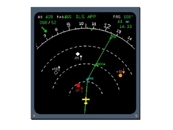
Supplemental Type Certificate
10051300 REV. 2
Upgrade of TCAS to V7.1 on Boeing 737
Bombardier CRJ Passenger to VIP conversions, Business Aircraft Cabin

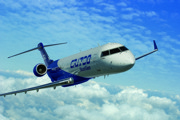
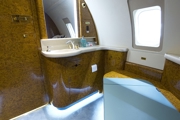
Conversion of Bombardier CRJ's into fully customized VIP Aircraft. Partial modification up until fully customized designs, conversions and liveries available. Please contact us with your requirements, ideas and questions!
Fokker Services in/near seat power supply USB ports

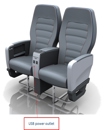

As a result of passengers bringing their own PED's, there is an increased need to charge these PED's.
Fokker Services has introduced an in-seat power supply system that will allow the passenger to charge their PED's, based on the universally used USB standard with max 2.1 amps. We can support different aircraft types.
Validated Decompression Analysis with DECOM7 Tool


Overview
The DECOM7 Decompression Analysis Tool by Fokker Services Group enables decompression analysis for supported aircraft types. The analysis can be performed for these aircraft types in in their baseline (pre-mod) configuration without any customer input, but also for any post-mod configuration (based on customer input ) for e.g. VIP conversions or special mission adaptations.
DECOM7 can perform the decompression analysis for any flight level and typical scenarios, such as windshield loss, engine non-containment, H0-hole etc. in order to show compliance with JAR/FAR/CS 25.365 (e)(f)(g).


